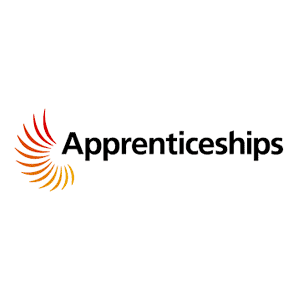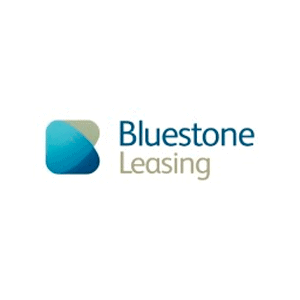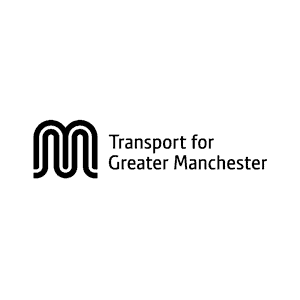Employer guide - Planning your apprenticeship

Every Damar apprenticeship is built on a partnership between us, you the employer and your apprentices.
This guide explains how we work with you, from planning the apprenticeship to on-boarding your apprentice. For simplicity, the guide generally refers to a single apprentice, but the process is the same for a group – we are proud to work with great employers of all sizes. During the process we will be in touch, mostly via Teams and by email, but this guide sets everything out step by step, so you know what we each need to do.
We work as one team. Planning the apprenticeship starts with experts in our business development team who will ensure that you choose the right apprenticeship for your organisation and your apprentice.
Our specialist apprentice recruitment team will, if required, help you fill your apprenticeship role.
With the apprenticeship planned and funding in place, expert colleagues in our business support unit will guide you and your apprentice through the remaining paperwork and on-boarding.
Your Damar coach, supported where appropriate by our specialist tutors, will then work with your apprentice and their workplace supervisor through to successful completion.
Throughout the journey our business support unit will remain on hand to ensure everything runs smoothly. And, of course, our safeguarding team is always on hand for any welfare concerns.
There are four key stages to planning your apprenticeship and on-boarding your apprentice, outlined in more detail below.
Stage 1: Readiness
Damar apprenticeships are about driving long-term value and helping your apprentices and your organisation to achieve their potential. Apprenticeships start to make a difference within just a few months, but they are not a quick fix. If you have an individual or individuals in mind, what are their objectives from the apprenticeship? Don’t forget that apprenticeships are a skills development tool for both existing and new employees.
Read the programme overview shared by our Damar business development colleague. Does the apprenticeship fit the role? Will it meet your objectives?
- Do you have senior management support for the apprenticeship?
- Have you identified the apprenticeship supervisor, usually the line manager?
- Can you commit to giving the apprentice the off-the-job study time they will need?
- If the apprentice is an existing colleague, are they committed?
- Will the apprentice have a safe and supportive working environment?
An existing or a new colleague can be an apprentice, provided that:
- The skills needed in their job role match one of the apprenticeship standards that we deliver
- The apprentice’s skills development need is big enough to need the planned training. The amount of off-the-job training varies but most Damar apprenticeships average between six and nine hours a week. Our apprenticeships take from just over a year to about three years (the planned duration is on the programme overview). If your apprentice needs less than six hours per week of off-the-job training (excluding holidays), they are ineligible
- The apprentice works in England for more than 50% of the time
- The apprentice has the right to work in the UK
- The apprentice has a permanent employment contract or a fixed-term contract that is longer than the expected duration of the apprenticeship
- The apprentice works 30 or more hours a week. Part-time employees can be eligible but the programme length and weekly training commitment may differ. Please speak to us if this is the case.
- The apprentice meets any additional eligibility requirements specific to the apprenticeship (e.g. our solicitor apprenticeship has some additional requirements).
The good news is that all (or virtually all) of the training and assessment costs are paid via the Apprenticeship Levy or the Department for Education but check the following at this stage:
- Does your organisation pay the Apprenticeship Levy (only for employers with an annual UK payroll of more than £3m)?
- If you do not pay the Apprenticeship Levy, you will need to create an account with the Apprenticeship Service (you may already have one) and reserve funding.
- Do you have sign-off for the 5% contribution for training (non-Levy payers only, where the apprentice is aged 22 or older) and any additional costs outside the government funding band?
Your Damar business development colleague will be able to send you a detailed costs breakdown for the apprenticeship, including an estimate of the employer’s national insurance your organisation may save.
If your apprentice is 16-18 and does not already have or cannot evidence GSCEs or equivalent in maths and English (in most cases at grade C/grade 4 or above), they will have to undertake functional skills qualifications as part of their apprenticeship. If the apprentice is 19+ and does not already have or cannot evidence GCSEs or equivalent in maths and English, they do not have to achieve functional skills qualifications as a mandatory part of their apprenticeship, but can still choose, with their employer, to study for and attempt the exam(s).
There is no additional cost for this and our functional skills tutors are specialists who have worked with adults on functional maths and English for many years. It is, therefore, a significant additional benefit to the apprentice and employer. However, there is some further investment of time.
Please note: For the solicitor apprenticeship, having (and being able to evidence) prior achievement of GCSE or equivalent in maths and English (at grade C/grade 4 or above) is required prior to enrolment.
We want to help you recruit the best candidate for your roles so, if you would like us to help you recruit your apprentice:
- Consider the job description, salary and benefits
- How can you make the role stand out?
- What opportunities will the apprentice have to progress?
Please note that we do not promote vacancies at the apprenticeship minimum wage – our team will be able to give you guidance on current market rates for strong apprenticeship candidates, if required.
Stage 2: Implementation
Our business development colleague will send you Damar’s contract for services and will also complete a short health and safety review with you (via Teams). You will need to send them a copy of your employer’s liability and public liability insurance certificates.
- Choose your start date. We plan cohort start dates for each apprenticeship up to a year in advance. To ensure that apprentices are set up properly on our systems and are able to complete their induction, the closing date for applications is 42 days before the start date. Bear in mind that, to ensure apprentices have a great experience, we have minimum and maximum cohort sizes for each apprenticeship.
- If you are recruiting the apprentice, they will need to have accepted your offer before the application deadline and have begun in post before the planned start date.
If you would like help with recruiting your apprentice, our specialists will help with advertising your vacancies and shortlisting candidates for you to interview.
If your organisation pays the Apprenticeship Levy you will need to set up a “cohort” on the Apprenticeship Service (even for a single apprentice). You will then be given a cohort reference number. If you do not pay the Levy, you will need to reserve funding via the Apprenticeship Service before you are given a cohort reference number. Download our detailed instructions on how to do this.
You may also find the Department for Education’s information page useful.
If you reserve funding/set up a cohort but ultimately do not enrol the apprentice, it does not matter – the reservation will simply lapse.
With the apprenticeship planned, funding in place and a provisional start date, expert colleagues in Damar’s business support unit will now guide you and your apprentices through the application and on-boarding.
Stage 3: The application
We will send you the online application form for you and your apprentice to complete and sign. The apprentice will need to upload with the form:
- Their CV
- Copies of all relevant exam certificates (any English and maths certificates are always required).
After the apprentice has signed the form it will be sent to you or the colleague you have nominated for signature. You (or they) will need to upload the apprentice’s job description and include your Apprenticeship Service cohort reference number.
Where apprentices indicate that they have additional learning needs on their application form, they will be invited to meet with our SEND Co-ordinator, who will put together a personalised support plan.
Please note: Part-completed applications cannot be saved, so ensure you have what you need before starting to complete the form.
Before signing the application we must carry out a face-to-face online check of the photo ID chosen by the apprentice in their application form (usually a passport or driving licence). Your apprentice will book this meeting, which is also attended by their workplace supervisor. At the meeting we will also confirm the dates of:
- The initial assessment and enrolment meeting with your Damar coach
- The online launch meeting to formally get the apprenticeship underway. This is usually a group launch, where your apprentice will get to meet other apprentices in the same cohort.
Stage 4: On-boarding
Our business support unit will now:
- Send the apprentice links to short online maths and English assessments. These are a funding requirement and must be completed before the initial assessment and enrolment meeting
- Set up the apprentice and their workplace supervisor on our e-portfolio system (OneFile) and our virtual learning environment (Damar OpenLearning).
This is an important meeting. It is where the workplace supervisor and the apprentice meet their Damar coach and discuss and agree the apprentice’s development priorities. To facilitate the conversation, we use a tool called Profiler. We return to Profiler during the apprenticeship to help track the apprentice’s progress. The discussion enables us, where necessary, to adjust the training plan around the apprentice’s individual requirements.
During this meeting, it will also be agreed whether 19+ apprentices who don’t already hold (or cannot evidence) GCSEs or equivalents in maths and English will undertake functional skills training and attempt the exam(s) as part of their apprenticeship.
At the end of the initial assessment meeting, if all parties are happy that the apprenticeship meets the apprentice’s needs and that they satisfy the eligibility requirements, the enrolment form and apprenticeship agreement are completed and signed.
Between the initial assessment and enrolment meeting and the start date, the apprentice will complete a short induction course on Damar OpenLearning. They will also have some initial tasks to complete on OneFile.
The workplace supervisor should use this time to watch the OneFile guide that they have been sent. The supervisor will also be invited to our next monthly online supervisor induction briefing where they will have a live introduction to the role, responsibilities and benefits of being an apprentice supervisor.
The launch visit takes place a few days before the apprenticeship start date. It is attended by the apprentice, other apprentices in the group, and their Damar coach. It is a chance for everyone to check that all the preliminary tasks are complete and that the apprentice has a clear understanding of the journey ahead.
Your organisation and your apprentice are now all set for success – congratulations!
Latest news
Changes to apprenticeship funding
Apprentice Supervisors: Research and Insights
The Multi-Generational Workforce
Partner employers












